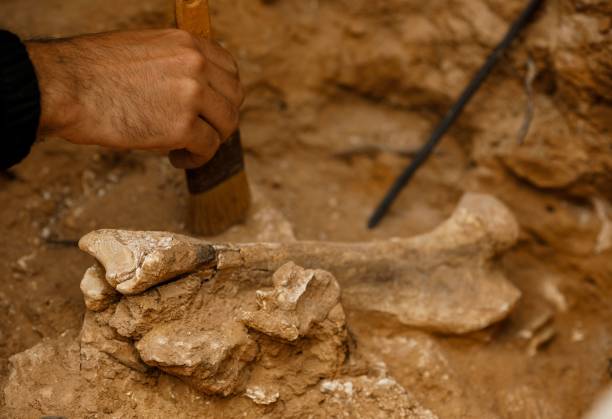A six week old baby girl is re-writing (pre)history as we know it. Her 11,500 year-old remains were excavated during a 2013 archaeological excavation of the Upward Sun River site in Alaska. What makes so her tiny remains special is that DNA extracted from them shows she belonged to a previously unknown line of ancient Native Americans. DNA research has opened up a whole new world to our ancient past. With researchers being able to collect ever older samples, it is now possible to use these techniques for things which were impossible only a few years ago. E.g. archaeologists now use ancient DNA to establish the gender of ancient human remains. They use it to explore disease patterns, familial relationships, social organization, and migration patterns. It’s in regards to the latter that this little girl is helping us re-interpret history as we know it.
Ancient DNA Rewriting History as We Know It
DNA as the Key to the Modern World
Historically, archaeologists have concluded that modern humans originated in Africa. Up until the advent of archaeological DNA research, this theory was supported strictly by the archaeological material. Now, however, DNA research lends conclusive support to the theory. Scientists use DNA to try to establish when, and in what order, various parts of the world were settled.
Sometimes a certain illness follows with certain DNA, and other times, the opposite is true. E.g. research points to modern humans having inherited certain genetic traits from Neanderthals. If you have European or Asian DNA in your admixture, it likely that between one percent and two percent of your DNA is Neanderthal DNA. Neanderthal DNA is most common in non-Africans, since it didn’t mix with ours until after our earliest ancestors had left Africa. It turns out, that the genes contributed to the modern human genome by Neanderthals protect us from certain illnesses.
DNA as the Key to the Ancient World
Large international projects (e.g. the Human Genome Project) have mapped DNA all over the world. This modern material can help us interpret our ancient past, as our genes give up its secrets. When archaeologists examine ancient DNA in the Americas, they would typically expect to find admixtures associated with modern lineages of Native American peoples.
When the girl’s remains were first found, researchers collected DNA from the Alaskan girl’s petrous bone (skull) in 2013. Recently the full genetic analysis was completed, and the genes were compared to genes from other ancient and modern people. Almost half of the girl’s DNA stemmed from ancient north Eurasians who once lived in what is now Siberia. The other half came from where we would normally expected it to come from, i.e. Native American people. In other words, the DNA material from the Upper Sun River site represents a genetically distinct population.
How Ancient is Ancient
So what? Well, ancestors of the first Native Americans began to emerge as a distinct population about 35,000 years ago. Researchers refer to this population as the Native American founding population. The team working on the genetic material from Alaska, however, had just found a member of a new, separate population. They named this genetically distinct group Ancient Beringians. They concluded that it, together with ancestors of other Native Americans, descended from one single founding population.
This branch had initially split off from other East Asians about 20,000 years ago. Eventually, this group mixed and bred with ancient north Eurasians in the region. But while the ancestors of other Native Americans expanded into the continent, the Ancient Beringians remained in the north. As water levels changed over time, the Ancient Beringians became isolated there. Their line eventually died out, and they have no modern descendants that we know of.
Sunrise Child-Girl’s World
The new DNA evidence cannot tell us if Ancient Beringians split from other Native Americans before or after the founding population traveled to Beringia. I.e. did they all travel together at one time, or did both groups travel to Beringia independently. What we can establish, however, is a date for the arrival of the first humans to North America.
The local Native American community has named the infant Xach’itee’aanenh t’eede gaay, or Sunrise Child-Girl. She and another late term fetus had been buried in a circular burial pit and covered in red ochre. In the pit were also grave goods, hunting weapons made of bone and antler. Researchers were able to find out relevant bits of what life would have been like at this ancient site. It points to a remarkable longevity of resource use which reaches as far back as the Ancient Beringians to modern day Athabascans.
Main Image:

